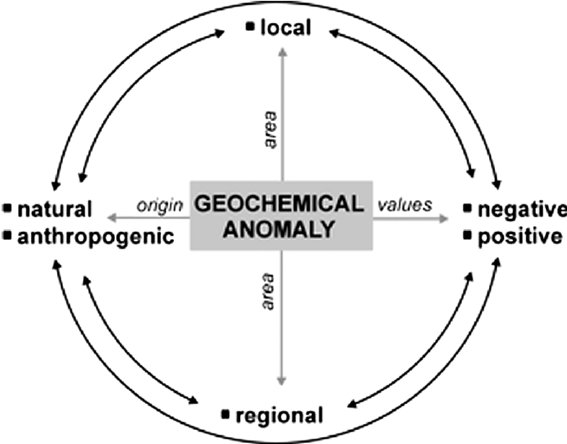
Week 13-14. Geo-chemical Anomalies and their applications for mineral exploration
Geochemical Anomalies
A concentration of one or more elements in rock, soil, sediment, vegetation, or water that is markedly higher or lower than background. The term may also be applied to hydrocarbon concentrations in soils.
Geochemical anomalies are geochemical features different from what is considered normal
They can be the result of:
1.unusual or uncommon processes concentrating particular elements (e.g. an ore-forming process, weathering and element dispersion from an unusual element concentration such as an orebody)
2.element accumulation or concentration by common processes acting over long periods (e.g. scavenging and concentration of certain elements by ironstones, ferrruginous regolith or manganese oxides)
3.artificial contamination of sites or samples
4.analytical noise or error (e.g. poor precision of the analytical method, particularly for element concentrations close to the detection limit).
Traditionally, geochemical anomalies have been identified by setting threshold values, which mark the upper and lower limits of normal variation for a particular population of data. Values within the threshold values are referred to as background values and those above or below as anomalies.
In mineral exploration interest is generally in positive anomalies, on the assumption that ore deposits and their weathering have increased element abundances above normal crustal levels. However, negative anomalies can also be important, for example where they reflect depletion in some elements during host rock alteration accompanying ore formation.



